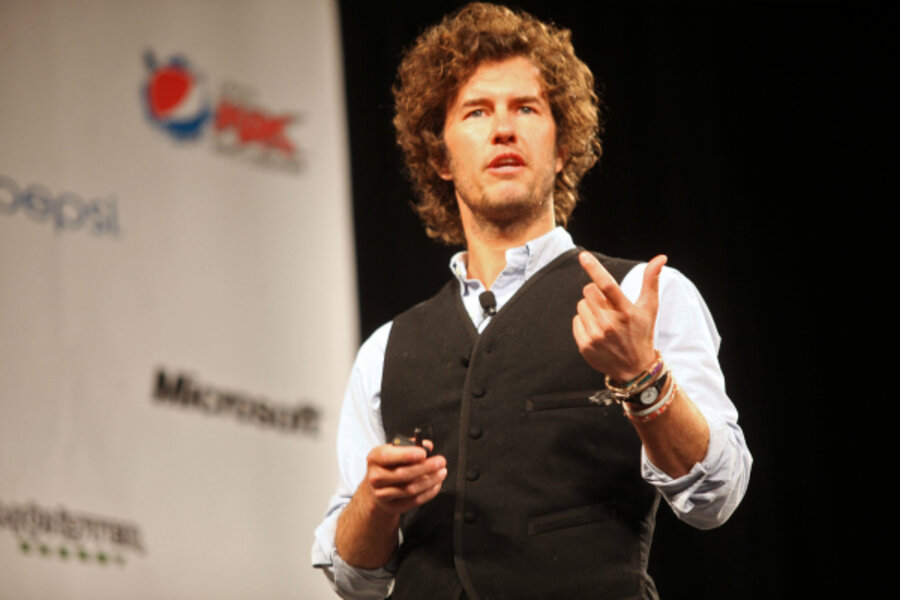Toms Shoes expands 'buy one, give one' to glasses
Five years ago, entrepreneur Blake Mycoskie had a canvas-and-rubber-soled epiphany. He would sell fun, fashionable shoes at a moderate price to Americans. For each pair he sold, he'd donate a pair of shoes somewhere in the developing world.
Toms Shoes has been a hit, and Mr. Mycoskie has given away 1 million pairs since 2006.
Last week he announced he'd be expanding into eye wear – a pair of fun and fashionable sunglasses sold to paying customers would underwrite prescription glasses or medical eye care for those in need.
And he doesn't want to stop there. "From this day forward, Toms will no longer just be a shoe company, it will be a one-for-one company," Mycoskie says.
Toms Shoes cost from $44 to $98 and the new sunglasses will run $135 to $145.
"Of the nearly 284 million people in the world who are visually impaired, almost 90 percent live in developing countries," the Toms website says, in explaining the company's "one for one" model. "It's a vicious cycle – poverty and disease can lead to vision loss. And blindness and poor vision keep people trapped in poverty....
"More than 18 million children around the world suffer from blindness or impaired vision. Children who have trouble seeing are often unable to go to or succeed in school, and have fewer chances to achieve a productive and successful life."
The medical aid will be administered through the Seva Foundation, an international humanitarian organization.
Toms has become one of the highest-profile companies with what it calls a "one for one" model – in other words, "buy one, give one."
Warby Parker, for example, also uses a "Buy a Pair, Give a Pair" model to provide free eyeglasses in the developing world. The cost of a pair of glasses to its paying customers is $95.
The concept of consumers buying something for themselves while making a charitable donation isn't entirely new. Public television and radio stations have offered recordings of popular programs or other "gifts" in exchange for making a donation to the station for many years. In 2007 the "One Laptop Per Child" project, begun at MIT, briefly offered a "buy one, give one" program. Donors could buy two of the innovative little laptops at $400, one of which was then donated to a child in a developing country.





